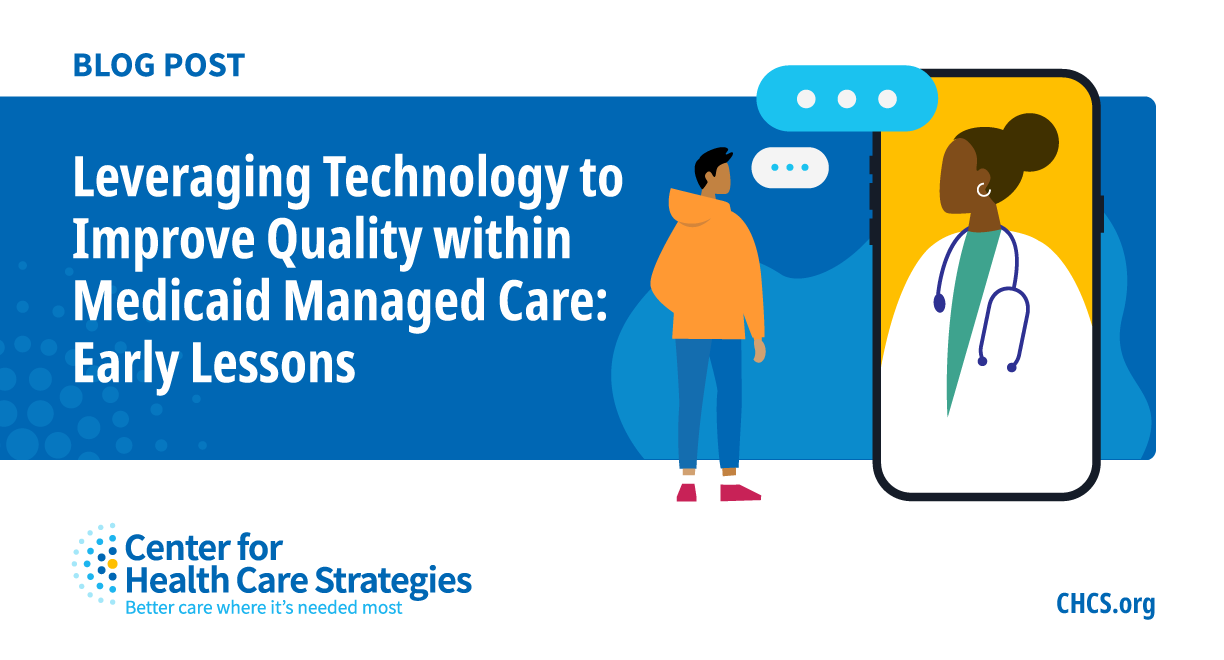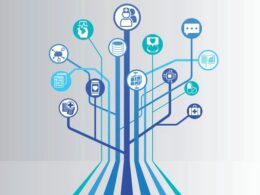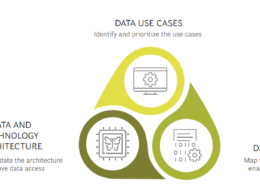This is a republication of the article below, with the title above, highlighting the message to countries outside the US as well.
Leveraging Technology to Improve Quality within Medicaid Managed Care: Early Lessons
CHCS Blog
Kelsey Brykman, Center for Health Care Strategies
JULY 27,2022
Executive Summary by:
Joaquim Cardoso MSc.
health transformation . institute
health technology unit
July 28, 2022
Health care organizations are increasingly using technology-enabled innovations to improve access to and quality of care.
- Tech-enabled solutions include a wide variety of interventions such as telehealth, texting, health education apps, cross-sector data-sharing, electronic health records, e-prescribing, and in-person care delivery that integrates technology.
Within Medicaid, however, there are specific challenges to scaling tech-enabled innovations, such as:
- policy variability across states;
- payment barriers to adoption of new care delivery models;
- lack of familiarity in the tech sector with how Medicaid managed care operates; and
- misperceptions around Medicaid-covered populations’ access to technology.
For these reasons, tech entrepreneurs have historically focused less on developing solutions to meet the needs of Medicaid members than other populations.
In the absence of Medicaid exploration and support of tech-enabled innovation, people served by Medicaid may not have access to innovations being adopted in other segments of the health care system.
Collaboration across policymakers, health plans, providers, and private-sector tech innovators can help:
- (1) identify quality gaps within Medicaid that technology solutions are well-positioned to address;
- (2) help private-sector vendors understand and address specific Medicaid population needs; and
- (3) create a policy environment that is more supportive of technology adoption.
Medicaid agencies can play an important role in driving adoption of tech-enabled innovation within Medicaid managed care through
- setting clear policy goals,
- engaging stakeholders in the identification of promising solutions,
- and adapting program requirements to support innovative care delivery models.
The Medicaid Innovation Collaborative (MIC), supported by The MolinaCares Accord, CommonSpirit, and HopeLab and led by Acumen America, Adaptation Health, and the Center for Health Care Strategies, seeks to improve the health and well-being of Medicaid populations by bringing together state Medicaid programs, their managed care organizations (MCOs), and other key stakeholders to identify and implement private-sector, technology-enabled solutions.
Early lessons from this initiative provide insights into ways states can support the identification and implementation of tech-enabled innovations:
- 1. Leverage existing assets
- 2. Identify how tech-enabled innovation can advance state policy goals
- 3. Partner with people served by Medicaid
- 4. Adapt policies to drive adoption.
Tackling these issues will be important for realizing the promise of tech innovation to advance health quality and equity, including within Medicaid.

1. Leverage existing assets.
Tech-enabled innovation is often new and unfamiliar territory for states.
However, many states are laying the groundwork to support adoption of tech-enabled solutions through other policy initiatives underway.
For example, strong, collaborative, and accountable state-MCO relationships provide an important foundation for these efforts, and many states are actively engaged in strengthening those relationships to ensure alignment and enhance impacts.
Addressing existing payment and regulatory barriers to new and improved models of care is another area of widespread focus across states.
Alternative payment approaches are often more amenable to supporting investment in and use of tech-enabled solutions.
2. Identify how tech-enabled innovation can advance state policy goals.
Tech-enabled innovation is one of many care delivery strategies states may pursue to improve Medicaid quality and equity outcomes.
A key step to advancing innovation is defining which specific state policy goals might benefit from tech-enabled solutions.
States should assess how technology can help address existing quality or access gaps, and support existing programs.
States may particularly want to consider how technology could be used to enhance the capabilities of local organizations and provider networks.
For example, some telehealth models prioritize building relationships with local, on-the-ground providers to coordinate care or even offer services within community-based settings like schools.
Such integration can be an important strategy for building trust in the community and avoiding unintended consequences, such as technology vendors competing with or burdening capacity-constrained community-based organizations.
Defining specific policy goals and metrics of success can inform processes — such as requests for information and procurements to identify tech-enabled innovations — and may also be used to incentivize MCOs to invest in innovations aligned with state priorities.
For example, through MIC, states and other stakeholders defined specific challenges and areas of opportunity for tech innovation related to adolescent and maternal behavioral health care access and delivery.

3. Partner with people served by Medicaid.
In order for technology to improve access to and quality of care, it is critical that states consider how to effectively partner with individuals enrolled in Medicaid in addition to community-based organizations.
Listening to and learning from enrollees and communities is essential to understanding the highest priority barriers to care and what types of tech-enabled solutions are appropriate for addressing community- or population-specific needs.
For example, MIC held interviews and focus groups with Medicaid enrollees, providers, and community leaders to identify barriers to care and convened community advisory boards to support identification of private-sector solutions that could help address health disparities.
States generally have a wide variety of mechanisms for engaging and communicating with Medicaid enrollees that can be used to explore opportunities for tech-enabled innovation.
4. Adapt policies to drive adoption.
There are many different roles states can play to support implementation of tech-enabled solutions.
Some states, such as North Carolina and Rhode Island, have supported implementation of specific private-sector solutions statewide.
More commonly, states allow MCOs flexibility in determining whether and how to contract with private-sector vendors.
In such cases, states may consider:
(1) holding MCOs accountable for achievement of quality goals relevant to tech-enabled innovation,
(2) incentivizing or requiring MCOs to integrate technology into care delivery; and
(3) adapting Medicaid coverage or reimbursement policies to encourage and financially sustain tech-enabled models of care.
These policies can be technology-specific or more broadly aimed at driving quality improvement, regardless of the type of technology.
For example, reimbursement for telehealth services has greatly expanded post COVID-19, and states may consider how to craft long-term reimbursement policies and managed care requirements to sustain enhanced access to care.
States can also develop MCO incentives focused on particular priorities, such as health equity, to drive care delivery innovation, including, but not limited to, models integrating technology.

Looking Ahead
Technology-enabled innovations raise new opportunities and challenges for Medicaid programs.
As states work to define the role of market-based innovation in improving care, they may consider questions such as:
- Where can technology have the greatest impact on state priorities and community needs?
- How can technology build on state efforts to reduce disparities and address health equity?
- How can states support collaboration across MCOs in adopting tech-enabled solutions?
- How prescriptive should Medicaid agencies be in encouraging uptake of tech-enabled solutions?
- How can states, MCOs, and providers learn from each other to scale high-impact solutions?
Tackling these issues will be important for realizing the promise of tech innovation to advance health quality and equity, including within Medicaid.
Tackling these issues will be important for realizing the promise of tech innovation to advance health quality and equity, including within Medicaid.
Originally published at https://www.chcs.org on July 27, 2022.

Names mentioned
The Medicaid Innovation Collaborative (MIC),
The MolinaCares Accord,
CommonSpirit, and
HopeLab
Acumen America,
Adaptation Health, and the
Center for Health Care Strategies,












